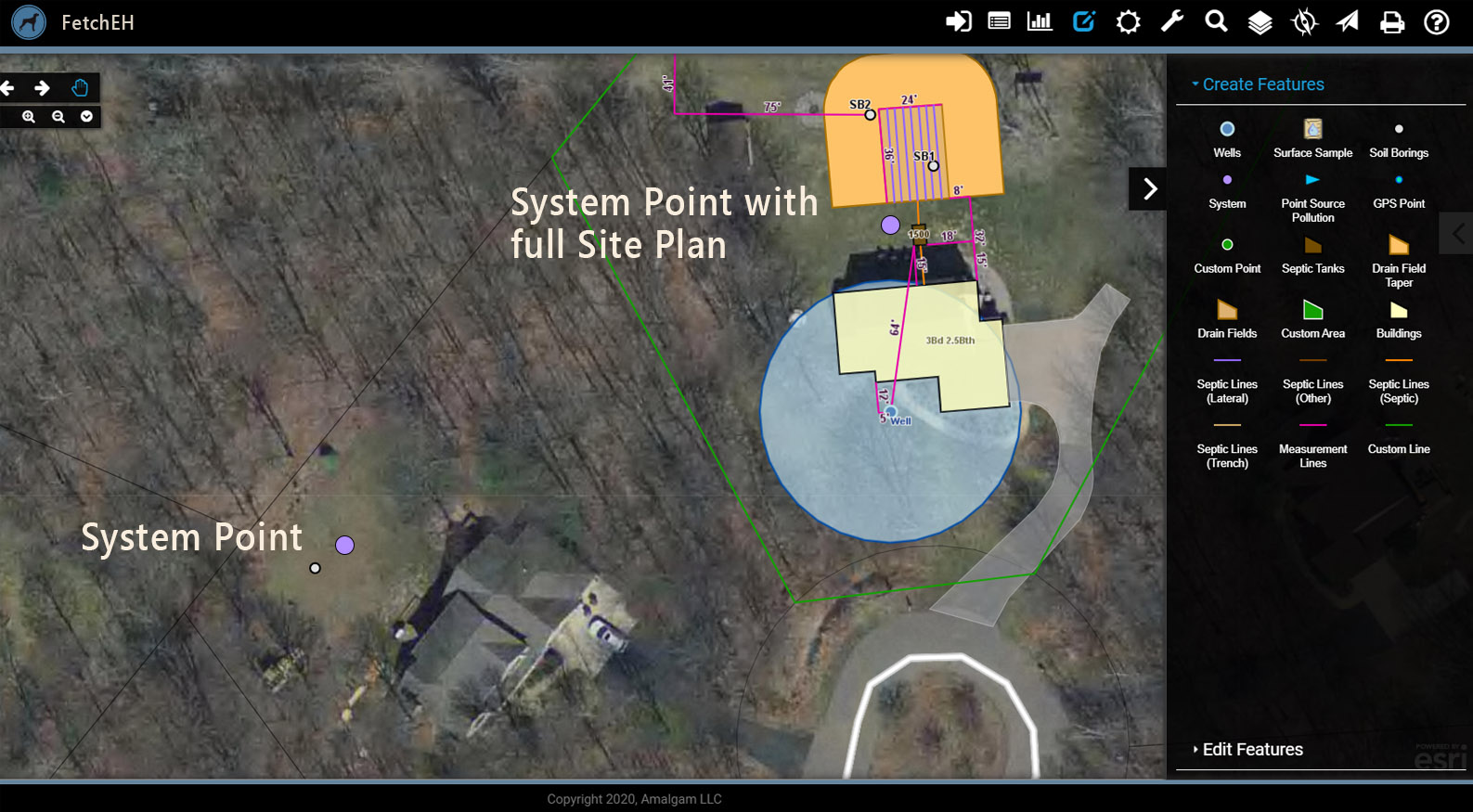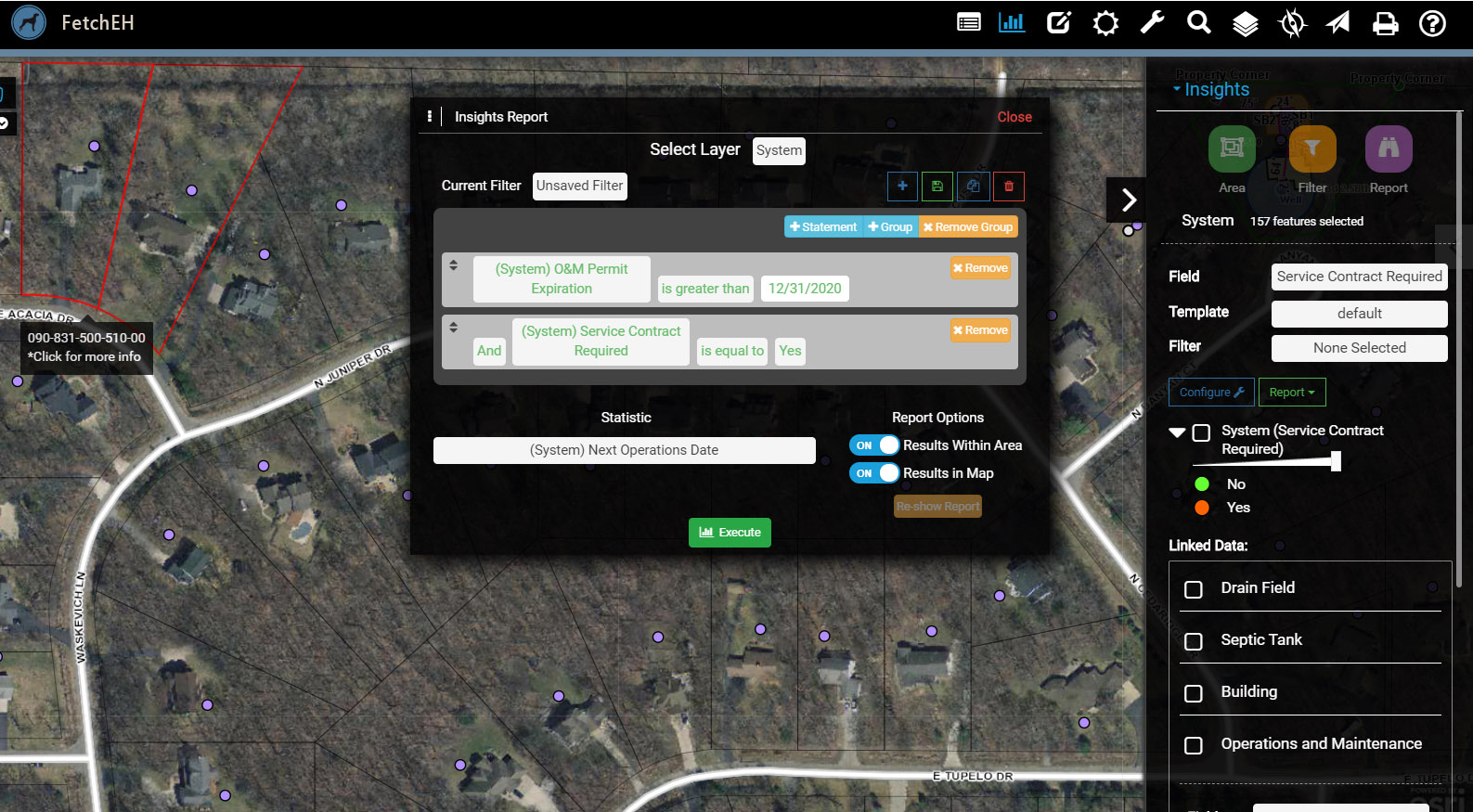EH Bellman
Location, data and EH. A better way forward.
EH Bellman - June.5.2018
The Road to Better Management Tools
Gaining new insights about onsite wastewater inventories can help regulators protect public health and the environment. However, regulators often lack good data and software that can be used to turn data into useful insights. Compounding this problem is the growth of operations and maintenance regulations, which creates more work for regulators and the need to understand and manage time sensitive data, like a service agreement or operations inspection. Successful management of onsite inventories will increasingly depend on good data and management tools that improve operational efficiencies and produce new insights.
From the good data perspective, the similar ‘garbage in, garbage out’ saying applies. Creating good digital onsite data must consider how the data can be used to improve the tools and strategies that regulators use to manage onsite inventories. Often agencies invest in data conversions to digitize paper records, improvements to existing digital records or venture into O&M workflows, without considering how the resulting data can be used as a management tool. This creates the never-ending cycle of data that is used primarily for record keeping rather than a management tool. To learn more about good onsite wastewater data read this earlier post The Case For Good Data.

Representing Onsite Systems
Asking Questions & Visualizing Data
Even when good digital data is available, there are few options for using it as a management tool. Permitting systems, by their nature, are designed for record keeping workflows. These systems work well until you want to dive deeper and ask more complex questions about onsite wastewater inventories. For example, what if you wanted to evaluate multiple onsite system variables across watersheds in your jurisdiction, or simply view a map to identify systems with a service contract set to expire in the next three months. Questions and visualizations like these are not possible without location-based technology.
Answering complex questions and visualizing onsite data require capabilities most commonly associated with modern mapping technology like geographic information systems (GIS). When mapping technologies are built into permitting software, like FetchEH, it enables regulators to visualize onsite wastewater data, including seeing query results, reporting and map visualizations. The visualization of onsite systems on the map is driven by the tabular records that store data that has been collected about each onsite system. The result is that your data now has more value and can be used as a management tool, not just for record keeping.

Creating a Query for O&M Data
The problem with mapping technology on it own is that it requires someone with expertise to use it effectively, or a development team to build the tools that streamline and simplify complex mapping and visualization tasks. For most regulators and agencies, neither is a viable option. One alternative is to use purpose-built, location-aware software designed for a specific task, like FetchEH.
Purpose-Built Software
Purpose-built software, like FetchEH, is designed to make it easier for regulators to benefit from modern technologies. Because the data and tools in FetchEH are developed specifically for Environmental Health workflows, the learning curve is reduced significantly compared to using out of the box mapping software. FetchEH for example, streamlines complex mapping and visualization tasks including mapping onsite systems, managing O&M events, visualizing onsite data, and creating custom insights and assessments. The benefit of purpose-built software is that the software is designed for your needs, rather than you learning how to make software meet your needs.
Ultimately it is a question of how you get to a point where data can be used to better manage onsite inventories and introduce new operational efficiencies. To achieve this, better data is first required and then access to tools that turn the data into management tools are needed. Purpose-built software simply makes the transition more efficient and lets regulators focus on their job now, rather than finding time to gain expertise in creating targeted applications that will meet their needs.
More Posts